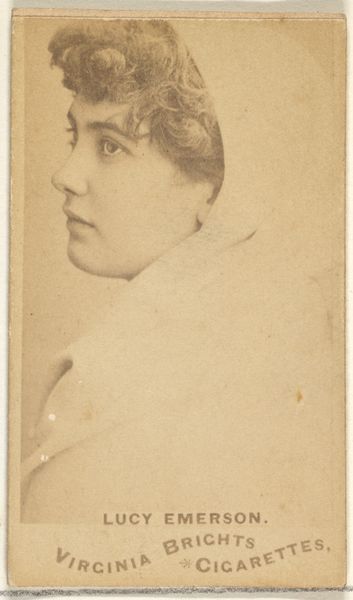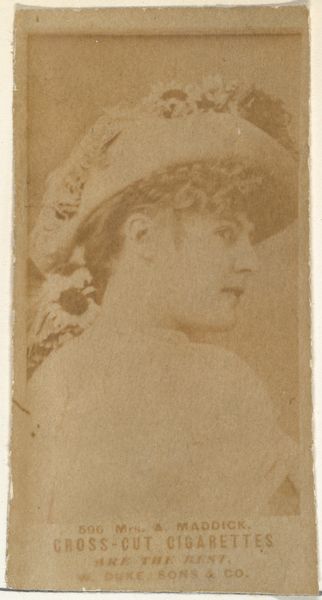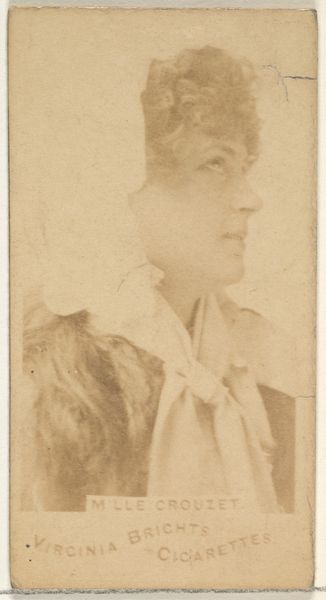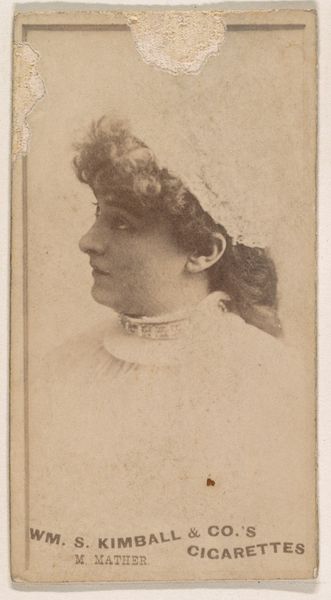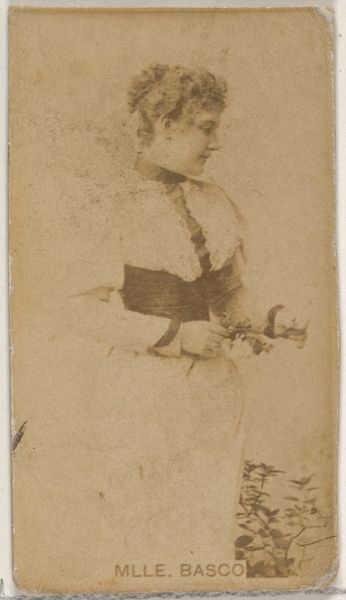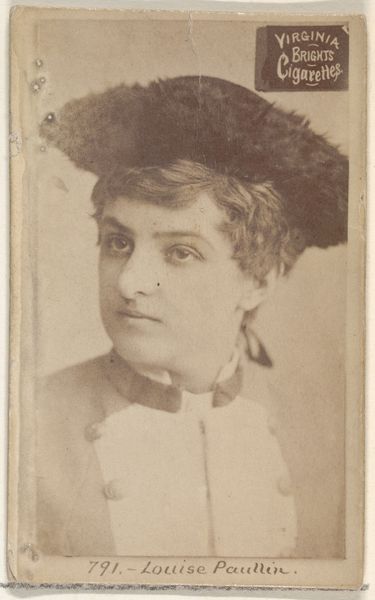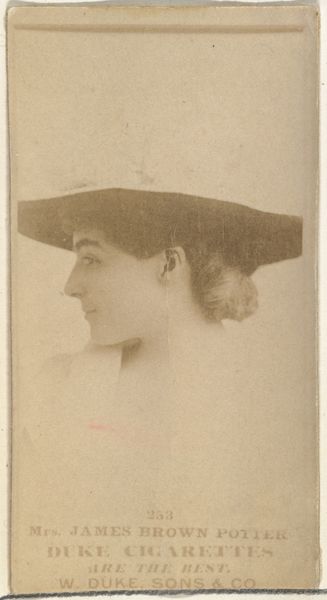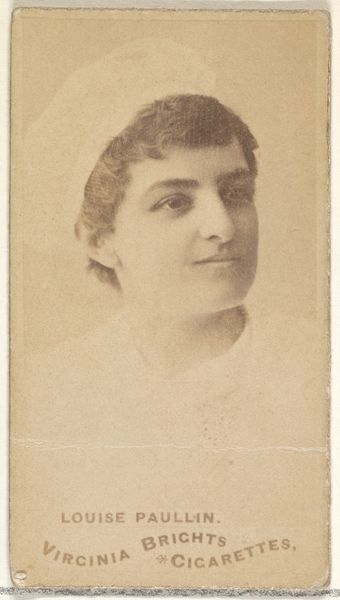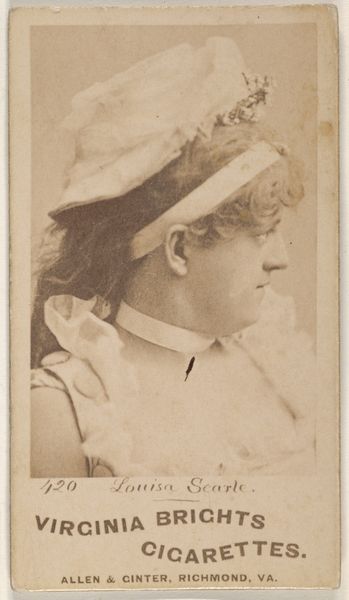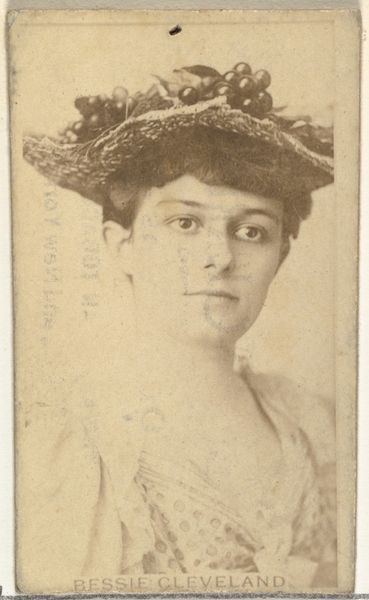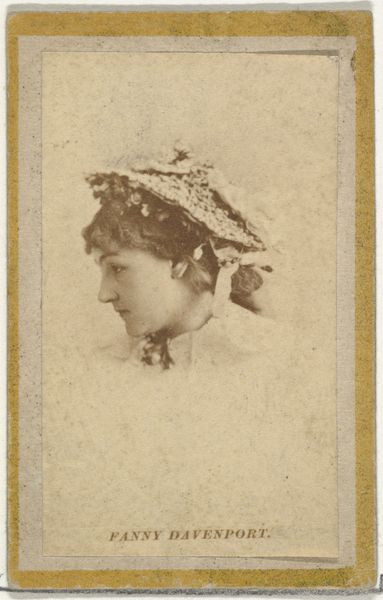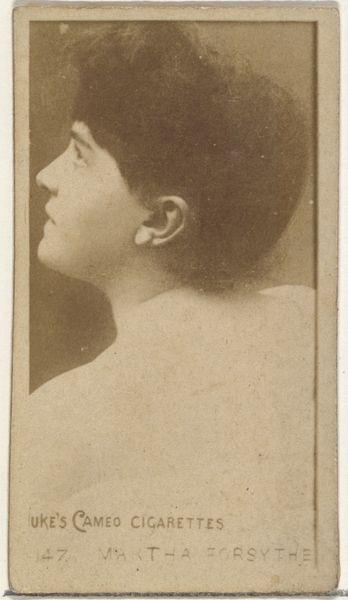
Card Number 249, Miss Dauvray, from the Actors and Actresses series (N145-7) issued by Duke Sons & Co. to promote Duke Cigarettes 1880s
0:00
0:00
drawing, print, photography
#
portrait
#
drawing
# print
#
photography
#
academic-art
Dimensions: Sheet: 2 11/16 × 1 3/8 in. (6.8 × 3.5 cm)
Copyright: Public Domain
Editor: So, this is a portrait of Miss Dauvray, from the Actors and Actresses series. It's a cigarette card produced by Duke Sons & Co. sometime in the 1880s. It's understated. What strikes you about it? Curator: This portrait, seemingly simple, speaks volumes about the commodification of female identity in the late 19th century. Tobacco cards like these placed actresses – real women – into the marketplace, reducing them to collectible objects, their value tied to the sales of cigarettes. Editor: I hadn't thought about it that way. What's the significance of it being an actress specifically? Curator: Actresses held a unique, often precarious, position in society. They were public figures, their image circulating widely, yet often judged by stricter moral codes than their male counterparts. Placing Miss Dauvray on a cigarette card, in essence, appropriates her image for commercial gain while simultaneously reinforcing societal expectations around female performers. It invites questions of agency: did she consent to this? What was the economic reality for women in theatre at the time? Editor: It’s interesting how this little card reflects so much about gender and commerce at the time. The way you frame it, she wasn’t just being celebrated, but used. Curator: Precisely. Consider how her individual identity gets somewhat erased; she becomes simply "Card Number 249." It encourages us to look beyond the surface and examine the complex power dynamics at play in these seemingly innocuous cultural artifacts. It highlights the intersection of art, advertising, and the evolving role of women in society. Editor: I’ll definitely look at these cards differently now, considering the wider cultural implications. Curator: And that's precisely the point—to see art, even in its most unexpected forms, as a mirror reflecting the complex realities of its time.
Comments
No comments
Be the first to comment and join the conversation on the ultimate creative platform.
